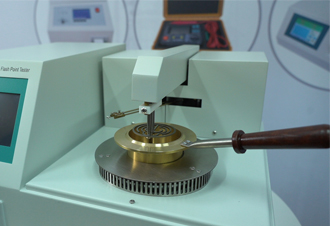 English
English



-
 Afrikaans
Afrikaans -
 Albanian
Albanian -
 Amharic
Amharic -
 Arabic
Arabic -
 Armenian
Armenian -
 Azerbaijani
Azerbaijani -
 Basque
Basque -
 Belarusian
Belarusian -
 Bengali
Bengali -
 Bosnian
Bosnian -
 Bulgarian
Bulgarian -
 Catalan
Catalan -
 Cebuano
Cebuano -
 China
China -
 China (Taiwan)
China (Taiwan) -
 Corsican
Corsican -
 Croatian
Croatian -
 Czech
Czech -
 Danish
Danish -
 Dutch
Dutch -
 English
English -
 Esperanto
Esperanto -
 Estonian
Estonian -
 Finnish
Finnish -
 French
French -
 Frisian
Frisian -
 Galician
Galician -
 Georgian
Georgian -
 German
German -
 Greek
Greek -
 Gujarati
Gujarati -
 Haitian Creole
Haitian Creole -
 hausa
hausa -
 hawaiian
hawaiian -
 Hebrew
Hebrew -
 Hindi
Hindi -
 Miao
Miao -
 Hungarian
Hungarian -
 Icelandic
Icelandic -
 igbo
igbo -
 Indonesian
Indonesian -
 irish
irish -
 Italian
Italian -
 Japanese
Japanese -
 Javanese
Javanese -
 Kannada
Kannada -
 kazakh
kazakh -
 Khmer
Khmer -
 Rwandese
Rwandese -
 Korean
Korean -
 Kurdish
Kurdish -
 Kyrgyz
Kyrgyz -
 Lao
Lao -
 Latin
Latin -
 Latvian
Latvian -
 Lithuanian
Lithuanian -
 Luxembourgish
Luxembourgish -
 Macedonian
Macedonian -
 Malgashi
Malgashi -
 Malay
Malay -
 Malayalam
Malayalam -
 Maltese
Maltese -
 Maori
Maori -
 Marathi
Marathi -
 Mongolian
Mongolian -
 Myanmar
Myanmar -
 Nepali
Nepali -
 Norwegian
Norwegian -
 Norwegian
Norwegian -
 Occitan
Occitan -
 Pashto
Pashto -
 Persian
Persian -
 Polish
Polish -
 Portuguese
Portuguese -
 Punjabi
Punjabi -
 Romanian
Romanian -
 Russian
Russian -
 Samoan
Samoan -
 Scottish Gaelic
Scottish Gaelic -
 Serbian
Serbian -
 Sesotho
Sesotho -
 Shona
Shona -
 Sindhi
Sindhi -
 Sinhala
Sinhala -
 Slovak
Slovak -
 Slovenian
Slovenian -
 Somali
Somali -
 Spanish
Spanish -
 Sundanese
Sundanese -
 Swahili
Swahili -
 Swedish
Swedish -
 Tagalog
Tagalog -
 Tajik
Tajik -
 Tamil
Tamil -
 Tatar
Tatar -
 Telugu
Telugu -
 Thai
Thai -
 Turkish
Turkish -
 Turkmen
Turkmen -
 Ukrainian
Ukrainian -
 Urdu
Urdu -
 Uighur
Uighur -
 Uzbek
Uzbek -
 Vietnamese
Vietnamese -
 Welsh
Welsh -
 Bantu
Bantu -
 Yiddish
Yiddish -
 Yoruba
Yoruba -
 Zulu
Zulu
standard rotational viscometer
Understanding the Standard Rotational Viscometer
The standard rotational viscometer is an essential instrument in rheology, the study of the flow of matter. It provides a reliable and accurate measure of the viscosity of fluids, which is a critical parameter in numerous industries, including pharmaceuticals, cosmetics, food, and petrochemicals. Viscosity is defined as the resistance of a fluid to flow, and it plays a significant role in determining how a product behaves during processing, storage, and application.
Principle of Operation
The standard rotational viscometer operates on the principle of rotational motion to measure viscosity. The device typically consists of a spindle, immersed in the fluid to be tested, which is rotated at a constant speed. As the spindle rotates, the fluid's resistance to flow creates shear stress on the fluid. A torque sensor measures this resistance, and the viscosity can be calculated using the relationship between the applied shear stress and the resulting shear rate.
This straightforward methodology allows for both dynamic and steady-state measurements, catering to various applications. The viscosity readings obtained from a standard rotational viscometer are usually expressed in centipoises (cP) or millipascal-seconds (mPa·s), facilitating easy comparison across different substances and industries.
Calibration and Standards
To maintain precision and accuracy, proper calibration of the viscometer is crucial. It is typically calibrated using standard viscosity fluids with known viscosity values. Manufacturers often provide calibration standards, and regular checks are necessary to ensure ongoing accuracy, especially when measuring critical or highly variable fluids.
standard rotational viscometer

Standards set by organizations like ASTM (American Society for Testing and Materials) and ISO (International Organization for Standardization) outline the procedures for using rotational viscometers. These standards ensure that the measurements are reliable, reproducible, and comparable across different laboratories and industries.
Applications
The applications of standard rotational viscometers are vast. In the food industry, they are used to determine the viscosity of sauces, dressings, and dairy products, influencing sensory characteristics and shelf-life. In the pharmaceutical sector, viscosity plays a pivotal role in the formulation of syrups and suspensions, ensuring proper dosing and bioavailability of active ingredients.
Cosmetic formulations also benefit from viscosity measurements, as the texture, stability, and application properties of creams, lotions, and gels are closely tied to their viscosity. Additionally, in the petrochemical industry, viscosity measurements assist in evaluating the flow characteristics of crude oil and other refined products, enabling better processing and transportation strategies.
Conclusion
In conclusion, the standard rotational viscometer is a vital tool for measuring fluid viscosity across various industries. Its operational simplicity, combined with the need for accurate and reliable measurements, positions this instrument as an indispensable part of quality control and product development processes. Adhering to established standards and routine calibration ensures that businesses can rely on viscosity measurements to enhance product performance, safety, and consumer satisfaction. As industries continue to innovate and evolve, the role of rotational viscometers will remain significant in maintaining the integrity of products we use daily.
-
Ensuring SF₆ Gas Safety: Introducing PUSH’s Integrated SF₆ Analyzer for Dew Point, Purity, and Decomposition MonitoringNewsJul.10,2025
-
Exploring the Main Types of Industrial Endoscopes and Their Applications Across IndustriesNewsJul.04,2025
-
Testing Equipment Industry Sees Major Advancements in 2025: Smart & Precision Technologies Lead the WayNewsJun.06,2025
-
Applications of Direct Current Generators in Renewable Energy SystemsNewsJun.05,2025
-
Hipot Tester Calibration and Accuracy GuidelinesNewsJun.05,2025
-
Digital Circuit Breaker Analyzer Features and BenefitsNewsJun.05,2025



